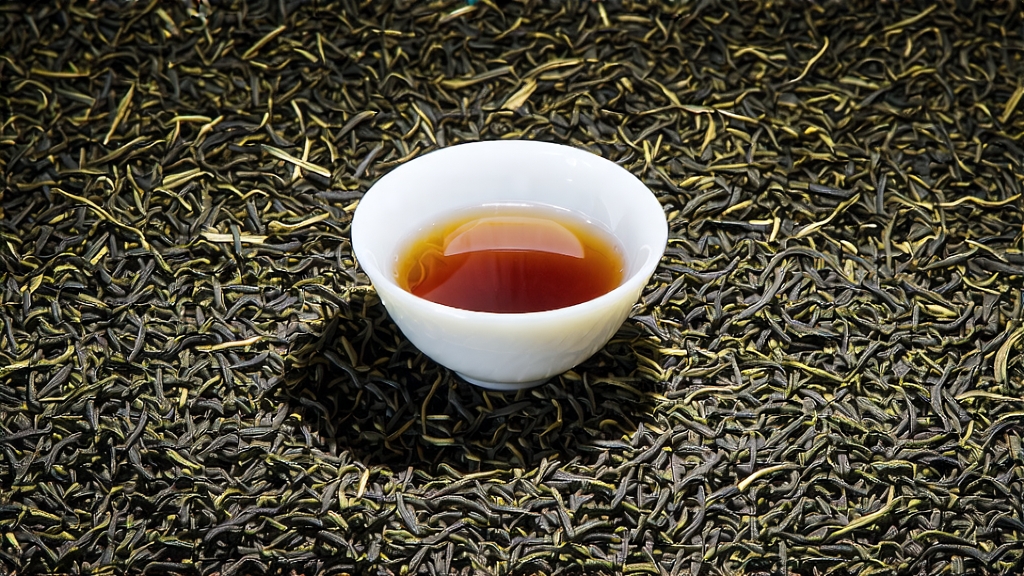
Long before English tea clippers raced across the Indian Ocean and ladies in London parlors debated the merits of milk-first or tea-first, a small village in the Wuyi Mountains of northern Fujian province was already perfecting the world’s first fully oxidized tea. Locals call it Zhengshan Xiaozhong; the West knows it as Lapsang Souchong. Revered by tea historians as the progenitor of every black tea on earth, this pine-smoked masterpiece carries within its curled, glossy leaves the aroma of resinous Chinese red pine, the memory of Ming-dynasty horse caravans, and the surprisingly gentle sweetness that once captivated the courts of Europe.
History: from military urgency to royal luxury
The accepted origin story dates to 1646, when Qing armies swept through the Wuyi region. Tea workers, anxious to dry their freshly picked leaves before the soldiers arrived, rushed the final firing stage over open fires of fresh pine boughs. The resulting tea, imbued with an unmistakable smoky perfume, was initially considered a ruinous mistake—until Dutch traders tasted it in the port of Xiamen and declared it extraordinary. By 1669 the British East India Company had listed “Bohea Souchong” among its most valuable commodities; Catherine of Braganza’s dowry chest that same year is said to have contained a small tin of the same tea, introducing it to the English court and launching a fashion that would reshape global trade routes.
Terroir: why Wuyi’s microclimate matters
The protected core zone of Tongmu Guan, a narrow gorge at 1,200 m elevation, sits inside a national nature reserve where subtropical monsoon clouds collide with cool air descending from the Huanggang Mountain massif. The result is a perpetual mist that filters sunlight into a soft, diffused glow, slowing photosynthesis and concentrating amino acids in the tender spring buds. Granitic, well-drained soils rich in potassium and manganese lend a flinty minerality that balances the tea’s natural maltiness. Crucially, only the original Xiaozhong cultivar—small-leaf, slow-growing, and naturally resistant to local pests—can legally be labeled Zhengshan (literally “original mountain”). Attempts to replicate the tea in flatland plantations fail precisely because they lack the diurnal temperature swing and the wild forest terroir that imprint the leaf with its signature pine-resin affinity.
Leaf grades and styles
Within the Lapsang family three distinct grades exist. The highest, Zhengshan Xiaozhong, is produced solely in Tongmu Guan from the first two leaves and a bud, smoked only briefly over embers of aged Masson pine so that the fragrance lingers like a distant campfire rather than a kipper factory. The middle grade, Wuyi Xiaozhong, accepts leaf from surrounding townships and a longer smoking window, yielding a more pronounced tarry note. Finally, Waishan Xiaozong (“outside mountain”) is grown in neighboring provinces, often machine-rolled and heavily smoked to mask vegetal off-notes; this is the inexpensive variety that once flooded supermarket aisles and gave Lapsang an undeserved reputation for tasting like liquid bacon. A fourth, modern innovation—unsmoked Zhengshan—omits the pine phase entirely, revealing a velvety cocoa-and-longan character that has won converts among specialty cafés from Brooklyn to Berlin.
Craft: the eight stages that turn green into gold
- Plucking: dawn mist still clings when pickers break the apical bud set, aiming for the standard “two and a half” leaf configuration.
- Withering: trays of leaf are laid on bamboo racks inside a Qing-dynasty wooden longhouse whose louvered windows coax a gentle draft. Over eight hours the leaf loses 60 % of its moisture, becoming as supple as suede.
- Rolling: on a round rattan mat the master rolls 3 kg of withered leaf between his palms, rupturing cell walls and initiating enzymatic oxidation. The motion is rhythmic, almost meditative, accompanied by the faint crackle of escaping sap.
- Oxidation: the rolled leaf is heaped in pine-wood crates covered with damp cotton. For three hours the pile is turned every twenty minutes; temperature and aroma are monitored by touch and scent alone. When the leaf turns from olive to copper the tea maker pronounces it “sufficiently drunk on its own